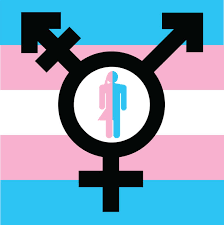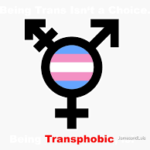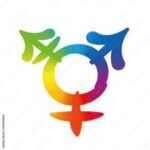Intersex individuals represent a fascinating yet often misunderstood aspect of human diversity. Among them are those who may possess both male and female anatomical traits, such as a vagina and a penis. This article delves into the world of intersex identities, exploring the science, societal perceptions, and the unique challenges faced by those with these characteristics. By fostering understanding and empathy, we can contribute to a more inclusive society that celebrates the spectrum of human experience.
Understanding Intersex: The Girl With Both Organs
Intersex is a term that encompasses a variety of physical conditions in which an individual is born with reproductive or sexual anatomy that doesn’t fit typical definitions of male or female. This could mean having both male and female genitalia, such as a vagina and a penis, or it might involve variations in chromosomes, hormones, and internal reproductive organs. The specific manifestations can vary significantly from person to person, leading to a rich diversity within the intersex community.Facial Feminization SimulatorMtf Nipple
The term "intersex" is often used as an umbrella term for numerous conditions, including androgen insensitivity syndrome (AIS), Klinefelter syndrome, and Turner syndrome, among others. Each condition has its unique characteristics and implications, making it crucial to approach intersex identities with sensitivity and openness to individual experiences.
What Does It Mean to Be Intersex? A Quick Overview
Being intersex means that a person’s biological characteristics do not fit typical definitions of male or female. While many people may think of intersex individuals as rare or confused, the reality is that intersex traits are relatively common, occurring in about 1 in 1,500 to 1 in 2,000 live births. Rather than being a disorder or a condition to be fixed, intersex is simply a variation of human biology.
Intersex people can identify as male, female, both, or neither, adding another layer of complexity to their experiences. It’s essential to remember that gender identity and biological sex are not the same; intersex individuals may identify with traditional gender categories or may choose to define their gender identity in non-binary or fluid terms.
The Science Behind Having a Vagina and Penis
The development of genitalia in intersex individuals can occur due to various hormonal influences during prenatal development. For example, if an individual is exposed to atypical hormone levels in utero, it can lead to the formation of both male and female reproductive structures. This complex biological interplay can result in a person having both a vagina and a penis, among other anatomical variations.
Understanding the biological mechanisms that lead to intersex traits is ongoing in the fields of medicine and genetics. Researchers continue to explore how genes, hormones, and environmental factors contribute to this fascinating diversity, broadening our understanding of human sexuality and identity. It’s a reminder of how intricate and varied human biology can be.
Common Myths and Misconceptions About Intersex Individuals
One prevalent myth about intersex individuals is that they are “confused” about their gender or sexual identity. In reality, many intersex people have a clear understanding of their identity, even if it doesn’t conform to societal norms. Gender identity is a personal experience that can exist independently of physical characteristics, and it’s crucial to respect how individuals define themselves.
Another misconception is that intersex traits are inherently pathological or require medical intervention. Many intersex individuals live healthy, fulfilling lives without the need for surgeries or hormonal treatments. Advocacy groups emphasize the importance of bodily autonomy, highlighting that intersex people should have the right to make decisions about their bodies without societal pressure to conform to binary norms.
Challenges Faced by Those with Both Female and Male Traits
Intersex individuals often face significant challenges, both socially and medically. Many are subjected to invasive surgeries and hormone treatments at a young age, often without their consent, in an attempt to “normalize” their bodies to fit societal expectations. These experiences can lead to long-term physical and psychological consequences, contributing to trauma and feelings of isolation.
Moreover, intersex people frequently encounter misunderstanding and stigma from society at large. Because intersex traits challenge conventional notions of gender, many individuals face discrimination, bullying, and a lack of acceptance in their communities, schools, and workplaces. This can lead to mental health issues, highlighting the need for greater awareness and understanding of intersex issues.
Social Perspectives: How Society Views Intersex People
The societal perception of intersex individuals is often shaped by cultural norms and attitudes toward gender and sexuality. In many cultures, binary views of gender – male and female – dominate, leaving little room for acceptance of intersex identities. As a result, intersex people may find themselves marginalized or ostracized, struggling for recognition and acceptance.
However, there are signs of progress. Increased visibility of intersex individuals in media and public discourse has opened up conversations about gender diversity. Advocacy groups work tirelessly to educate the public, challenge stereotypes, and promote the rights of intersex individuals. As society becomes more aware of intersex realities, there is hope for greater acceptance and celebration of diversity.
Support and Resources for Intersex Individuals and Families
For intersex individuals and their families, accessing support and resources can make a significant difference in navigating the complexities of their experiences. Organizations such as InterAct, the Intersex Society of North America, and OII (Organisation Intersex International) provide advocacy, education, and community support. These organizations aim to empower intersex individuals, offer resources for mental health, and promote awareness about intersex issues.
Family support is also crucial. Educating family members about intersex conditions can foster understanding and acceptance, helping to create a nurturing environment for the intersex individual. Open communication and access to resources can help families navigate medical decisions and societal challenges together.
Celebrating Diversity: Embracing Intersex Identities Today
In recent years, there has been a growing movement to celebrate intersex identities and advocate for their rights. Events like Intersex Awareness Day and campaigns promoting intersex visibility have played a vital role in fostering acceptance and understanding. These initiatives encourage society to see intersex individuals not as anomalies but as part of the rich tapestry of human diversity.
Embracing intersex identities means challenging binary notions of gender and recognizing the validity of all bodies and identities. By celebrating diversity and promoting inclusivity, we create a world where everyone can feel valued and accepted, regardless of their biological characteristics or gender identity.
Understanding and embracing intersex identities is essential to fostering a more inclusive and compassionate society. By exploring the complexities of intersex experiences, debunking myths, and supporting individuals and families, we can work towards a future where diversity is celebrated, and everyone has the opportunity to live authentically. Let’s continue to educate ourselves and advocate for a world where all identities are honored and respected.


